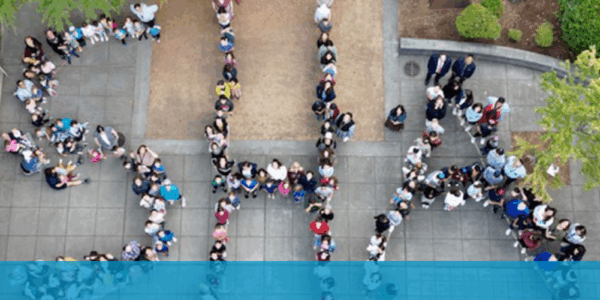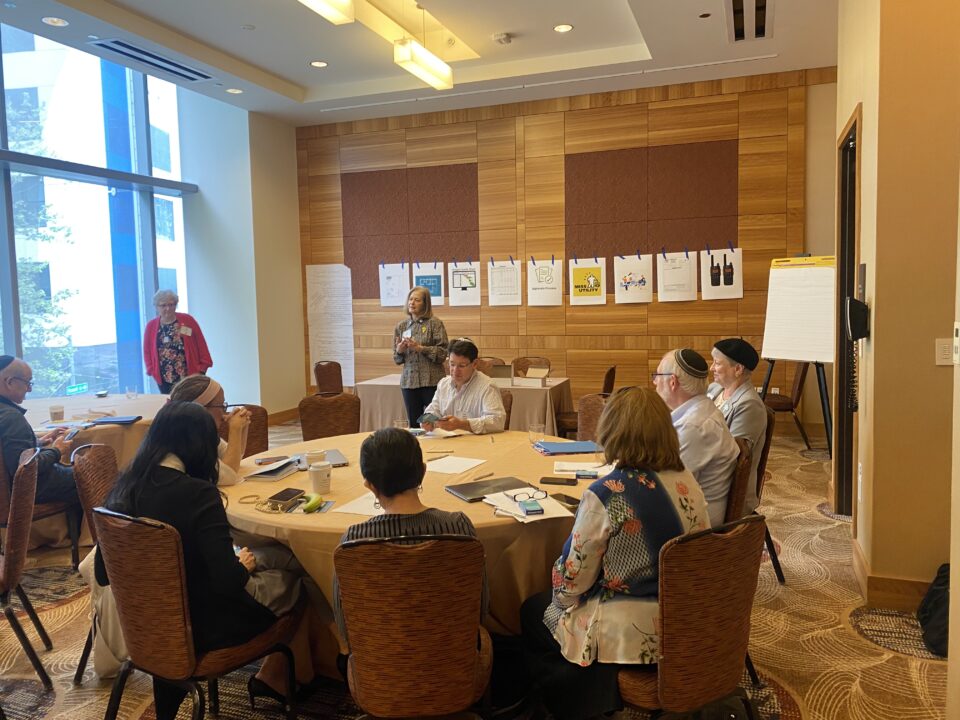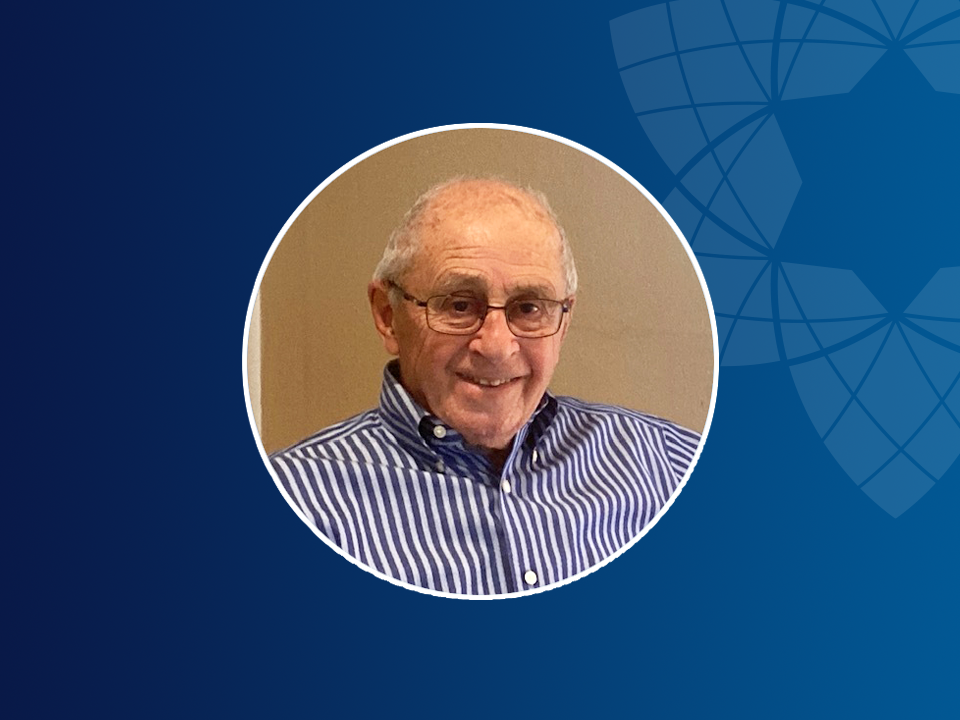
Samis Trustee Spotlight: Eddie Hasson
July 2, 2021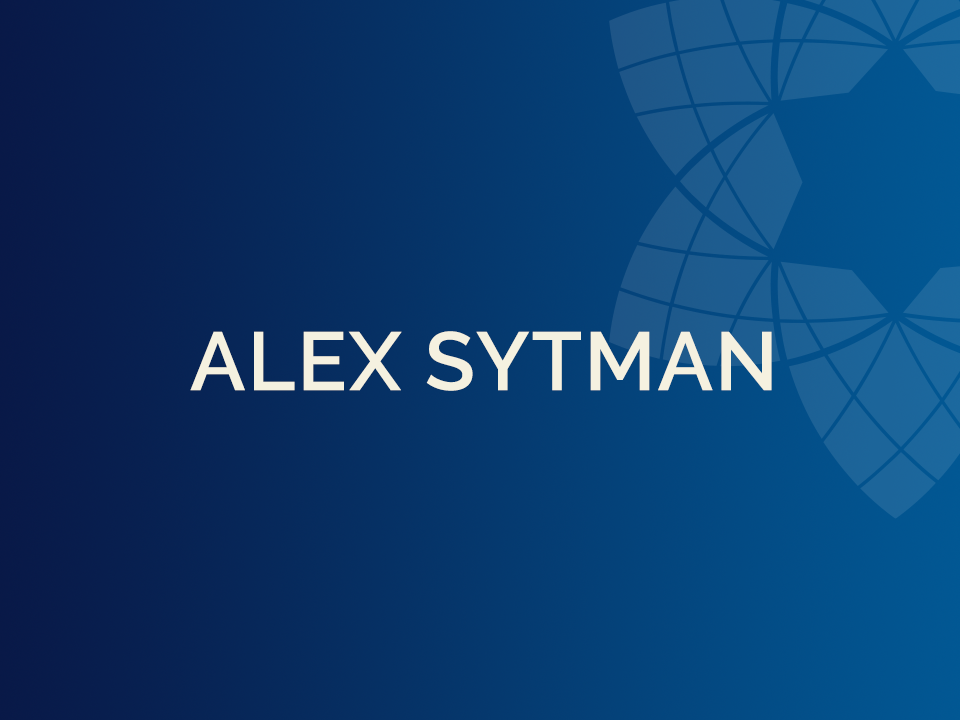
Samis Trustee Spotlight: Alex Sytman
August 6, 2021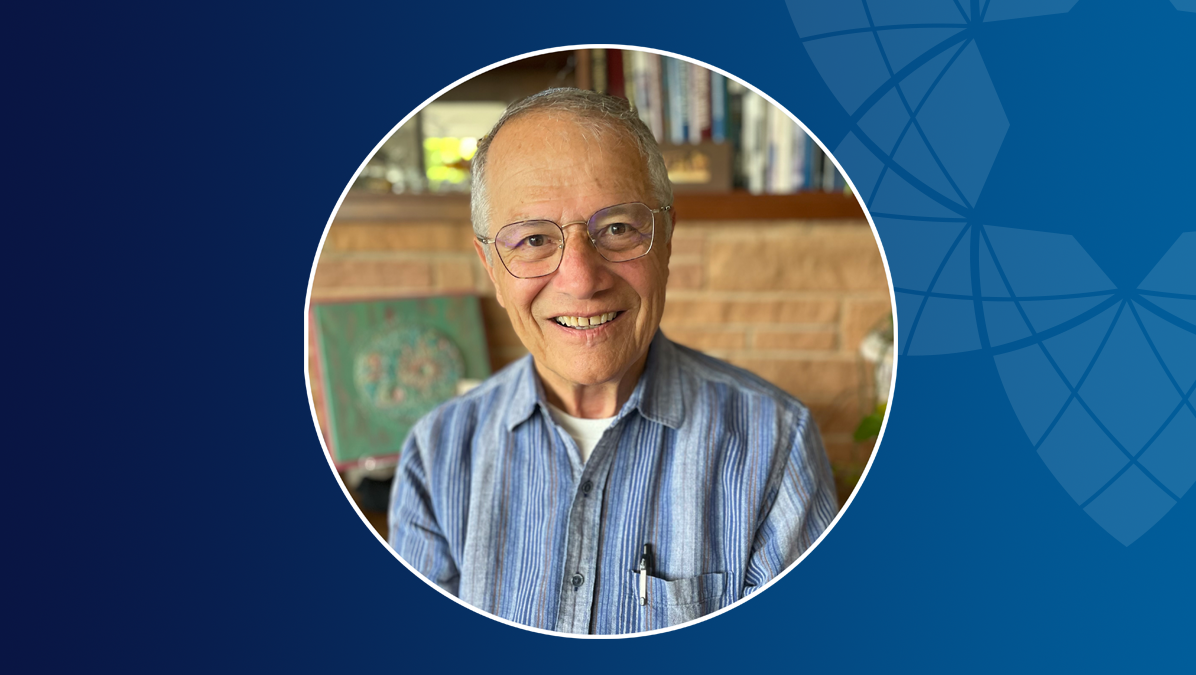
A conversation with community volunteer rockstar, native Seattleite, and former Board President Al Maimon
Years of Service: Lifetime Trustee
Committee (s): Grants Committee Chair, Trusteeship Committee
Past Service: Board President, Vice President
____________________________________
Did you have a personal connection to Sam Israel before joining the board?
I had virtually no connection to Sam. I almost don’t even remember meeting him, although I’m sure our paths crossed sometime. My connection with Samis was really born through Irwin Treiger and Eddie Hasson. Before Samis was formed, I knew Sam to be a very eccentric guy and who had very strong philanthropic interests. Eddie and Irwin sort of worked with him to help give shape to his philanthropy and they came up with this idea of setting up the Foundation. Between the time when they constructed the papers of the Foundation and the time when the Foundation was actually formed, Sam’s health declined, and his decision-making ability declined, so Irwin and Eddie slowly took over. There was an interim group including Irwin, Eddie, and me for a couple of years while Sam was still alive. While we were giving away small amounts of money at the time, we were also sort of contemplating what the Foundation should look like. So that was a long-winded answer to say I never met Sam Israel.
What’s the greatest story you ever heard about Sam?
There are several stories about Sam, but one that to me is emblematic of his background as a Sephardic Jew and as an independent personality, was the time he went up to visit Sephardic Adventure Camp when they had a location East of the mountains. Sam was living in Soap Lake at the time, and he wanted to visit camp, but he chose to drive up to camp on Shabbat. Because of Shabbat, the camp was not open for visitors. He eventually got in, but that’s something that he never forgot and never forgave the camp for on one level. But even still there was a respect on his part for Rabbi Maimon who led the camp at the time, for what was going on, and that to me illustrated his being Sephardic and his being a very independent person and at the same his respect for Jewish tradition.
Tell us about the early evolution of the Samis Board
Initially I held the role of Vice President on the Board. At the time we didn’t have much structure and there were things that we each did on our own. The unofficial role that I took on the board was sort of “the process and planning guy”. The board at that time was very much a roll up your sleeves, hands-on board. We didn’t have very many people working at the Foundation, and we were tactically making our decisions on the asset side. Eli Almo convinced the board to hire the University of Washington to do the inventory of our properties, because no one really knew all the properties we had and what the values were. That report sort of formed the basis of the strategy that we had with asset management and then we hired someone to manage and implement that strategy.
We didn’t really have the same kind of intentionality on the grants side. For a time, we did invite people to come and talk with us about what trends were in Jewish education. We had two parts of our philanthropy; Jewish education in Washington State, and the program areas in the State of Israel that Sam had identified. But we didn’t develop a comprehensive strategy, a longer-term strategy for the grants side, and so what I would do from time to time and is say, well, “Why are we doing this, what’s our plan going forward and what’s our process and how do we know that what we want be supporting is actually happening?” There was a very strong sense of saying “We are the funders, we’re not the experts, so we can’t tell anybody what to do with their grants” and so our job was to assess community need and how that fit into our mission and fund those organizations or programs that aligned with us. That was rooted in our psyche for a long, long, time and just in the past 5-10 years, what’s happened is that as a board we are still supporting initiatives we believe in, but now we are also asserting that we have a point of view, we have professional support staff with expertise, and a vision for the future that is informing our grantmaking. It has taken quite a bit of time for this to enter the board’s collective consciousness.
Could you guide us through your personal Jewish journey?
Growing up from the time I was a kid until young adulthood I was involved in the Jewish community. I was actually part of the first class at the Seattle Hebrew Academy. My uncle Solomon was one of my chief mentors throughout my whole life and he took me there to go to school. I attended from sixth grade to eighth grade and then he started the Sephardic Bikur Holim Camp, which was a three-day sleepaway family camp. I was a counselor, never a camper, and I worked at the JCC day camp in the 50s and 60s, and so the sandbox that Samis is currently playing in, is something that I sort of grew up in. I was also a youth director volunteer in a synagogue and when the opportunity presented itself to join organizational boards, my professional work, which was related to planning and the organization of bodies coming together, came into play. I joined the board of the Seattle Hebrew Academy, I was on the board of my synagogue, and President of both organizations, and I joined the Federation as Vice President of Planning and Allocations. Then in the mid 90s when Samis emerged, I was intrigued by the idea of being in an organizational setting where you have that special kind of leverage to effect change.
Going back though, in 1969 my wife and I had two little kids and we moved to Israel where we lived for two and a half years. My wife always says the reason we moved to Israel at the time is because we couldn’t afford to visit! We lived there and grew to understand the rhythm of living in Israel in the late 60s. For the first year, or six to eight months, we lived in Upper Nazareth. I worked in Haifa, and then we moved to Neve Shaanan. I had the opportunity, before the startup nation, to be at the forefront of bringing computing to Israel, but that’s another story. We left Israel, not because we we’re getting away from Israel, but because we wanted our kids to be with our family which we didn’t have there. We didn’t have zoom at the time, so I remember we wrote a lot of letters. I also found that the volunteer structure I experienced in the U.S. didn’t exist in the same way in Israel. The State of Israel largely provided for the needs of the people in every way. There was something missing for me in terms of my life of being a community volunteer, so that was another reason we came back Seattle and I’ve been volunteering on behalf of the community ever since.
What is the most meaningful story, event, or experience you can recall related to your service on the Samis Board?
Samis’ investments in Israel have been very interesting for me to watch and see how they evolve. It’s also been very interesting to witness the evolution and development of philanthropy and volunteerism in Israel over the years. Particularly to watch as Israel’s government has shifted from a founding basis of socialism towards implementing aspects of capitalism. The change has paved the way for the private sector to play a role in supporting non-profits, not just through funding, but also doing so in parallel or in partnership with philanthropy. The role that Samis has started to play in fostering stronger connections between the general Israeli population, non-profit organizations, and the government, is really interesting and exciting to me.
On the Seattle side, the role that Samis played following the 2008 economic downturn was one of my disappointments. We did not fully understand and appreciate the impact of the recession from an economic or societal point of view. And while we always felt like we were one a step ahead, we were actually one step and a half behind the changes and what was transpiring in the community. What’s exciting to me now is that in the last two to three years, with the new trustees and the realization inside Samis’ institutional brain that something’s not working, is that we can and should be leading to effect change. This is the most exciting time for me – it’s seeing the evolution of the idea that Samis has the leverage and position to effect change. We know that we can and should have a position, and not having a position, is in fact taking a position. But in taking a more active role, while we acknowledge that there is a power imbalance and we’re not going to dictate everything, we are intent to leverage our position through partnerships, not power. The maturation process of the board, and everything associated with it, excites me.
Which area of the Foundation’s philanthropy most resonates with you and why?
I hear a trio in day school education, the State of Israel, and experiential education! Rather than saying that there’s one that speaks more to me than the other… I’ll say that day school education speaks to me because of history and because I think it still represents the single most expensive, but also most important and impactful intervention for Jewish society by virtue of its intensive, immersive nature. One of the things that I think we are a step and a half behind on, not just Samis, but society at large, is that there are so many things happening out there. What does day school education mean in the 21st century? Experiential education, because of the impact I’ve seen with camping, youth groups, etc., is highly valuable, but we also need to recognize that we can’t reach all of the Jewish population in our area. There’s a whole spectrum of educational opportunities and that is exciting to me. I think the effect of Jewish education on a macro level is what speaks to me most. In order to make macro change, we have to support programs on the ground such as day school and experiential education.
In the early to mid-history of Samis, the archaeological and environmental aspects of our Israel Philanthropy were very interesting and engaging. I especially enjoyed our relationship with Yossi Leshem – his work, his connection to Sam Israel and his personality. The digs in Jericho and Herodium were fascinating, and it was especially exciting when Ehud Netzer z”l found Herod’s tomb. Now, with the Samis mission and the areas of support that we’ve defined and refined through our strategic planning process last year, our Israel philanthropy is compelling to me on a different level, especially because we now have our consultant Rachel Grunbaum, and trustees Rabbi Meyers and Barry Ernstoff on the ground in Israel exploring opportunities with intentionality and strategic thinking. I also see the connection between Jewish education in Washington State, our work in Israel, and our broader role in supporting Jewish community. I am excited by the potential to leverage our work effectively in each of our program areas in the interest of serving a larger whole!
How has serving on the board impacted your personal perspective on philanthropy and the Jewish community?
My perspective has evolved over time. I think that when we initially came together at Samis we were naive in a lot of different ways. The idea of being able, from an independent Foundation point of view, to help those particular areas of Jewish education we identified, was very exciting and still is. There were many efforts over the last 50-60 years to bring philanthropists together to learn and work with one another and that’s a process that’s still happening. For Samis, in the world of philanthropy, I think we approached the work from an individualistic perspective. We said, “We have our pot of money, we’re going to give it to who we want, and we’re going to do it by ourselves.” Slowly we came to the realization that from the perspective of leveraging our impact, we needed to do things differently. I think what Eli Genauer has done and is doing with his seat on the Jewish Funders Network board is extraordinarily important and valuable for us in making that connection to change our thinking.
I think that we’re on a journey at Samis. One of the things, parenthetically getting older, that I have to recognize about myself and I’ve had to keep reminding myself of, is that now when I look around the room, I’m the oldest, or one of the oldest guys there. I remember when I was young, and I used to look at those “older guys” and they would say “Well that’s a good idea, but we tried it and didn’t work”, or just “No, that doesn’t work”. On the one hand, I’m trying to find a way to share my experience and my perspective, and at the same time I also try to be open minded enough to recognize that that was then, and this is now. I do have something to say, and I do have something to contribute, but it’s nowhere near as much related to having done recent work in the field. Rather, it’s more of a mentorship type of role that I can take and help those around me recognize the wisdom that emerges from experience. I now see my personal role at the Foundation as something that I need reminding of and refining of as we move forward.
Where do you envision the Seattle Jewish community 10 or 20 years from now?
As with the history of all social enterprises, it’s not one directional. There are always ups and downs. And Seattle, in my experience, is very interesting to compare to the Vancouver and Portland Jewish communities. I think Seattle is actually somewhere in between them, in a lot of ways. It’s a little bit bigger than those communities, but something I’ve observed was that there’s a critical mass a community needs to have, in order for it to continue and to grow. The Portland and Vancouver communities have most always been right at the lower end of that critical mass, so they’re fighting for survival, while still doing some wonderful things, but because they’re not big enough, they can’t afford to lose anyone. Seattle’s Jewish community, because of its diversity and because of its size, has always been, in my observation, on the upside of the critical mass. So, we have opportunities to do things and yet sometimes things happen that are out of our control or maybe unfortunately in our control that take us down and we lose the critical mass that is self-sustaining and leads to growth. We’ve struggled with sustaining that critical mass for a long, long time and in my lifetime I can point to a couple of times when we’ve been on the lower end of that spectrum.
Unfortunately, in the last 5-10 years, my feeling is that even though we’re greater in numbers than we were before, we are victims of this polarization plague that is afflicting humankind particularly in the United States, and we just aren’t big enough to have these little islands of smaller communities. I understand that these smaller communities are self-sufficient, but what has been a strength of ours is that we’ve always managed to find a way to not set aside the differences, but to work with those differences and do something. I think we are at an inflection point where our differences are becoming an impediment to working together and hopefully the warning signs and the recognition that we can’t continue this way is in the mind of a lot of people. The Jewish Federation’s Courageous Leadership Initiative and the re-establishment of the Jewish Community Relations Council both stem from this realization.
I’m don’t know what’s going to happen. I’m not a prophet. But my hope is that we have a positive future ahead of us in Seattle. You know the hardest part in physics is going the opposite direction and turning things around! The next few years will be crucial. The future of the Seattle Jewish community rests upon us being able to find a way to work together and generate something better than where we are right now. We have a ways to go to reach our potential, but we can start building a better future for everyone today.


